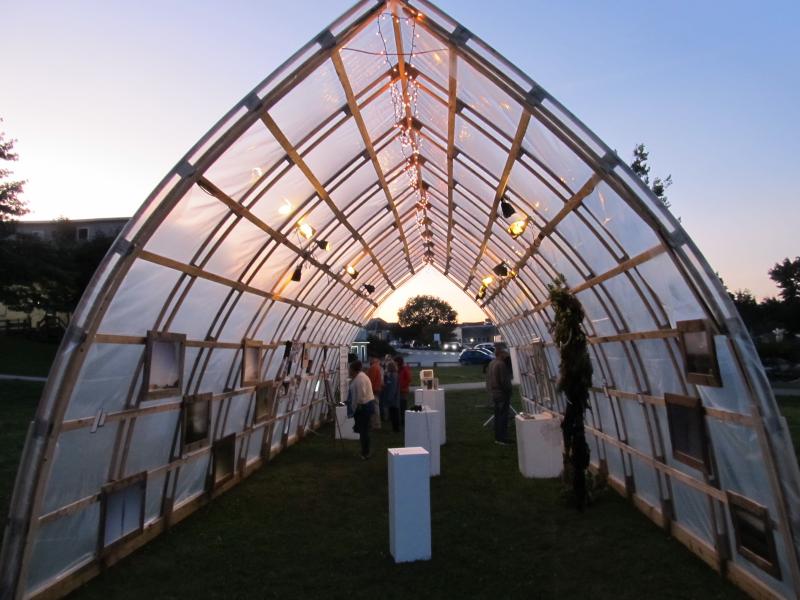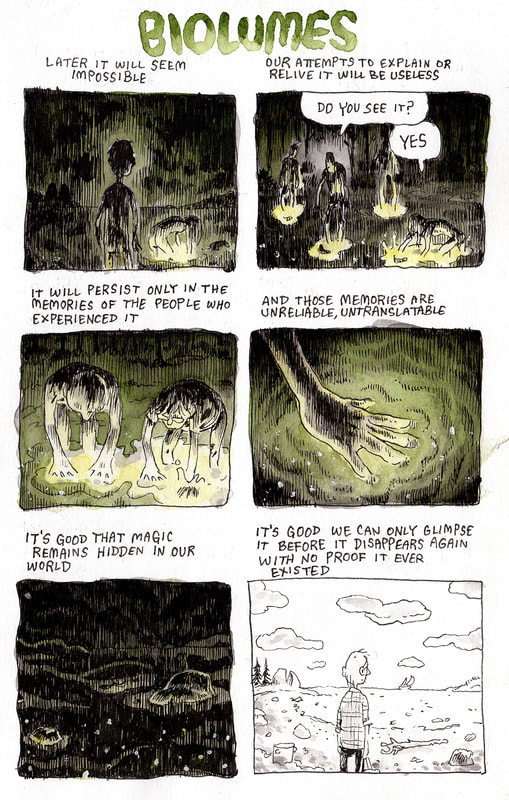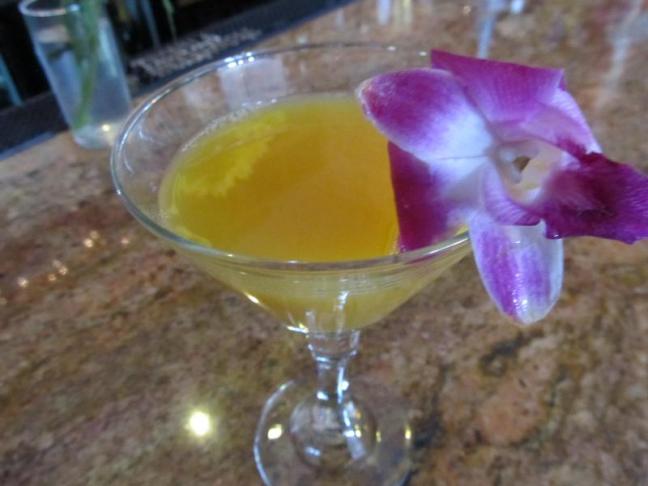|
A traditional family Thanksgiving may be ideal for some, but for people who don’t have family in Maine, may have strained family relations, or just don’t feel like slogging through holiday travel, there’s another way.
Friendsgiving, a decidedly un-traditional potluck dinner with friends, is how to put a fun and stress-free spin on the holiday, while staying put in Maine. Internet sleuths pinpoint the origin of the term Friendsgiving around 2007 or 2008 to reflect an informal gathering of a ragtag crowd, e.g., the child-free, the “holiday orphans,” the coworker, neighbor or single friend who is going to be stuck with a frozen Swanson’s Hungry Man turkey dinner and Netflix. It’s all about the camaraderie, and how we get through these long Maine winters. The best part about Friendsgiving is that it’s not beholden to stringent tradition. It can be a lunch or dinner gathering. It can even be a few days before Thanksgiving, so people can get their “friend fix” before joining their families on November 28. How To Plan The Menu (And Divvy up the Dishes) According to the Rules of Friendsgiving, the host planning the party is the one cooking the bird and the gravy. The most reliable friend has to bring the hors d’oevres. The rest of the guests take the pressure off the host by bringing a side dish, a dessert, and/or a specialty cocktail. The Food Network has some ideas on this. From mac and cheese to potato chip stuffed potatoes, this is the ideal time to ditch the canned cranberry and green bean mushroom casserole. Supporting Maine’s lobster industry and the lobstermen still out there hauling this time of year is a great way to add in a side dish to Friendsgiving and here are some great appetizer ideas from the Maine Lobster Festival. Friendsgiving Rituals The rituals of Friendsgiving are meant to be silly and fun or meaningful to the group. It can be a themed event, like a Tom Hanksgiving or a Friends-themed Friendsgiving with Rachel’s English trifle. Arriving in your own custom headwear is highly encouraged, using materials from a craft store. Others just all agree to arrive in their pajamas and slippers. Gather everyone around for the Macy’s Thanksgiving Parade which starts at noon, and take a shot every time one of the hosts says “fun” or “wow.” Here are the rules. For designated drivers, teetotalers or people adulting, do five jumping jacks instead. Board games are also a major feature of Friendsgiving as a way to loosen up guests who don’t know each other very well. Some folks even like to give thanks ahead of time by volunteering together at Heroes 4 Hunger at 6 a.m. or band together to help serve Thanksgiving dinner to others before going back to the host’s house and continuing the celebration. Once the Friendgiving meal starts, there’s still no need to be formal. Gather plates and pillows and eat on the floor watching old favorite movies or the Big Game. Your mother would be horrified, but she’s not going to be there. Or cover the table with butcher block paper and give everyone crayons. You can even put up a homemade poster and let your friends write what they are thankful for. There’s even a few public Friendsgivings being hosted around Maine for strangers who want to become instant friends. Here are more tips to make your Friendsgiving a festive one! Kay Stephens can be reached at [email protected]
0 Comments
Gabby Schulz lives deep in the woods of Maine—it’s as far away from the city he can get. As one of 10 participants on the floating artist residency in my story, Ten artists, two canoes and ten days down The Penobscot River, Schultz’s particular brand of artwork struck me. I thought I’d see photographs, poems, and sculptures at the artists’ reception (and I did, all good) but I didn’t expect to see hand-drawn comics with a biting tone. Here’s an older comic, titled The only thing I know, that provides a window into Schultz’s mindset. “I drew that comic while I was a working stiff in Chicago for a couple years,” he said. “Chicago is a really big city with a truly antagonistic stance toward nature or beauty of any kind. Every weekend I'd go mushroom hunting, which meant I had to ride my bike five miles to the center of the Loop, then catch a commuter rail an hour out of town, as far out into the suburbs as I could get, then bike another half an hour to the nearest green area on the map. It was hilarious to me that it took this much effort just to see grass without Roundup on it, but it was the only joy I could find out of life there. After a couple years of this ritual I did some research, and I learned the reason this one natural area hadn't been built up like the rest of Illinois was because it was the (unmarked) dumping ground for the world's first nuclear reactor. I guess this story is supposed to illustrate how desperate I was during this time to get to a place with trees instead of buildings, or plants instead of people, and how that must mean it's pretty important for humans to be outside of cities. But also it’s so fascinating and sad how hard it is to describe something so essential in any meaningful or articulate way.” Part of his bio gives a clue into his rationale. “I've embraced ‘gallows humor,’ a lifelong friend of comics, as the only sane response to the forces hurrying our own kaleidoscopic collapse, and I see absurdity as one of our few remaining pathways to beauty and joy.” “At this point it seems pretty self-evident that the world as we know it is dying, fast, and this can make an artist a little philosophical about what concepts like ‘obligation’ or ‘engagement’ or ‘posterity’ might really mean anymore,” he explained. He applied for and secured a spot on the Village Canoe in August, an experience, he said that took him out of the woods and into a communal experiment with strangers, which is not always a comfortable prospect when one works alone. “Overall it was just what I expected—a lot of paddling, some good nature communion, a little chaos, and some wonderful bonding with strangers,” he said. “The communal experience was definitely the highlight of the trip, as the group was such a great combination of different people with different focuses and interests and personalities — and yet, no one was pretentious or overbearing or unavailable or boring. We all gelled really nicely, and from what I hear that's a bit rare with a bunch of artists. “I was very curious to find out how other artists might be processing our changing relationship with the natural world, but I'm not sure anyone knows what to do now. With the fresh awareness of the Sixth Extinction hanging over us, communing with nature suddenly feels fleeting, unreal. Any inspiration I can draw from wilderness now feels more like finding ways to say goodbye -- to the ocean, animals or plants soon to be altered forever by climate change. It makes one feel obligated to document this very special moment in our history — likely a final chapter, as I see it — but that's also a hell of a thankless job. You have to laugh to keep from crying, and luckily that's a talent cartoonists have honed for generations now.” Out of his 10-day paddling and camping experience, Schultz created three comics for the final artists’ show; one titled Biolumes, one titled Time Capsule and one, untitled featuring a hug. I guess the Biolumes one is pretty self-explanatory, but the Time Capsule comic was just a statement of despair on everything,” he said. “You have a wonderful trip camping on some islands, but really, how is it contributing to stemming the tide of doom? Even with our minimal impact, how can we hope to ally ourselves with the natural world instead of further poisoning it? Looking at our efforts with a wide lens, it all just feels so hopeless, and decades from now our consumptions and comforts will probably seem criminally dumb, and all our big plans to save the world is just so much comically impotent hubris. Ironically, I feel like if more people were willing to see ourselves in this way, maybe meaningful change could happen. But while holding my breath waiting for that to happen, maybe it's all I can do to at least try to make us laugh at ourselves a little.”
For more information about Schultz’s work visit: gabbysplayhouse.com and for more information about the project visit:villagecanoe.org Kay Stephens of Pen Bay Pilot has worked tirelessly to assemble every notable Happy Hour offering in the Midcoast (and yes, it was hard work doing all of that sampling) into a guide that is easily accessible for the person who instantly wants to know, “where should we go today?” From upscale chic inns to hotspots with an urban feel to the local neighborhood taverns, every establishment in our list “Guide to Midcoast’s Happy Hours” has a list of their specials, days and times offered and even notes on the mood of each space.
Click to see guide.  CAMDEN — At first glance, the little faces Chris Gray has carved into his handcrafted guitar picks reveal big personalities. Are they pensive? Wincing? Smiling? Hard to tell, but whatever they’re “thinking” they’ve become the signature look of his most recent entrepreneurial venture, Riff Wood Picks. Riff Wood Picks are upcycled and handmade hardwood picks for guitar, bass guitar, ukelele and mandolin. Gray and his wife are originally from Tennessee, but moved up to Union seven years ago on a part-time basis, making it permanent three years ago. A long-time woodcarver, he just started making these guitar picks as a Christmas gift for his son-in-law, who is a musician. “Once I figured out what I was doing, I thought, this is something that others might be interested in,” he said. Since Christmas, he estimates he’s made about 250 of these picks and began a Facebook page. After getting a great response, he just recently built an Etsy site and has said in just a month’s time, he said he’s gotten an appreciable number of sales. “It’s taken off great guns,” he said. Gray credits K2 Music in Camden, where some of his picks can currently be found, for help with their design. As Gray isn’t a musician, he needed input from owners Mac Economy and Harvey Curtis, who are. “When I mentioned to them I was going to make them, I asked Mac and Harvey what were the best pick styles to use for different instruments,” he said. “They were generous enough to critique them and because of their input, I’ve made the picks better.” [See our video where Mac Economy gives a demonstration of how the picks sound.] Gray makes each pick out of laminated hardwoods, producing a sturdy pick with a triangle shape for guitars and an arrowhead shape for bass guitar. The best part about his craft is that he uses leftover scraps of quality hardwoods he finds at A.E. Sampson & Sons and Mystic Woodworks and upcycles scraps that normally would be thrown out or burned. To make them, he first starts with a glued log of two or three hardwoods, such as maple, cherry and walnut. After he band saws a small chunk from this log, he can work four-to-five picks out of each chunk. It takes him more time to do the sanding and polishing of the pick than it takes to do the carving. He calls the iconic look to his guitar pick faces as The Riff Master. “I’ve always enjoyed stylized faces in my carving,” he said, noting that no two faces are alike, but all are “cousins” of the original. The darkened color and shading in the expression of the faces is actually a natural embellishment as the result of working with a dremel, a rotary tool. “It just takes a minimum of strokes to do each one,” he said. “When the tool is sharp, it won’t scorch, but when it’s dull, the friction of the burr scorches the wood. I love the way it looks so I just do the faces with a dull tool.” Faces aren’t the only images he carves. He’s recently been branching out with other images, such as a lobster, the Tree of Life, the sun and moon, a sunflower, a dragon fly, and custom requests. Recently a woman asked him to carve the numbers: 143 into a pick. He was happy to oblige and asked her what the numbers meant. She said it was Morse Code for sailors and each number represented certain letters in a word, such as in this case: I LOVE YOU. Prior to making the picks, Gray also created a natural wood game called Tumblewood. “It’s like Jenga, but it’s pieces of split wood that are stacked more like a split rail fence.” So far, he’s sold about 500 of the games and wants to keep the business small and handcrafted. Between the game, his picks and his part-time living at a sawmill in Union and working for LT Auctions in St. George, he’s making a living here in Maine. He also still manages his family’s gallery in Tennessee. Gray is not ready for a mass production, however. “It’s a lot of carving and not something I’d want to do 40 hours a week,” he said. “It’s hard on your fingers.” Still, it’s enjoyable and gives musicians something to smile about when they put one of those funny little faces between their thumb and finger. Riff Wood Picks can be found at K2 Music and Once A Tree in Camden as well as on Etsy. Kay Stephens can be reached at [email protected]  Natalie’s award-winning bartender deconstructs the 207 Sour CAMDEN — In one week, the Midcoast has gotten more than 24 inches of snow. So, if you’re looking for a knock-your-boots-off cocktail for New Year’s Eve, here’s an ambitious drink created by Seth Knowlton, bar manager for Natalie’s Restaurant in Camden. It’s called the 207 Sour, a sour martini made with Applejack (a whiskey made from apples), along with a sharbat (a homemade concoction of Red Delicious apple peels marinated with lemon). It was time to feature Natalie’s again in this series. To say they are on a roll lately is an understatement. Recently, Camden Harbour Inn/Natalie’s melded their brand with Relais & Chateaux, a world-wide brand known for extraordinary hospitality and culinary achievements. This is the highest level in hospitality internationally, and only two Maine restaurants have become members of Relais & Chateaux. Additionally this year, their chef, Chris Long, won the Maine Lobster Chef of the Year competition and Knowlton was voted Maine’s Bartender of the Year by maine.eater.com. “I was a little shocked,” said Knowlton. “I’m just a small-town Camden, Maine, boy. But I’ve been around, been bartending all along the way. I work with a lot of talented people here, so you pick up on it if you’re willing to.” The 207 Sour is Knowlton’s original creation and the sour notes in the martini don’t come from any commercial sour mix, but instead, from a complex layer of lemon juice, a deep apple flavor and the tang from the balsamic vinegar in the sharbat. “The Red Delicious apple peels take three weeks to make to get that deep red color. It’s really cool, because it’s a labor of love. It tastes unlike anything you’ve ever tried. It hits a part of your palate that’s rarely explored,” said Knowlton. The cocktail is built in a pint glass with:
“If anyone’s worried about using an egg white in the cocktail, it’s like a ceviche, which uses raw fish and lime juice,” said Knolwton. “In the same manner, the lemon juice in this cocktail neutralizes the egg white and makes it safe to drink.” For anyone interested in re-creating this cocktail at home, it takes some time and dedication. Knowlton’s sharbat recipe is not an exact science, he says. (Take a large container and two cups water, two cups balsamic vinegar, ¾ cups of sugar and mix with the peels from five Red Delicious apples. Let sit for about two weeks.) Or, to get the full exotic experience, simply slip into one of the velvet red bar stools at Natalie’s, take in the beautiful twinkling lights on the pine trees inside the restaurant this season and have Knowlton craft one for you. Take a sip. Ain’t life grand? Kay Stephens can be reached at [email protected] |
The Killer ConvoThis blog is a is a killer roundup of all arts, entertainment, brewery & distillery, food trucks, happy hour happenings in the Midcoast Maine. Feel free to email me anything about Midcoast arts, entertainment & the creative economy. Archives
June 2021
Categories
All
|








 RSS Feed
RSS Feed